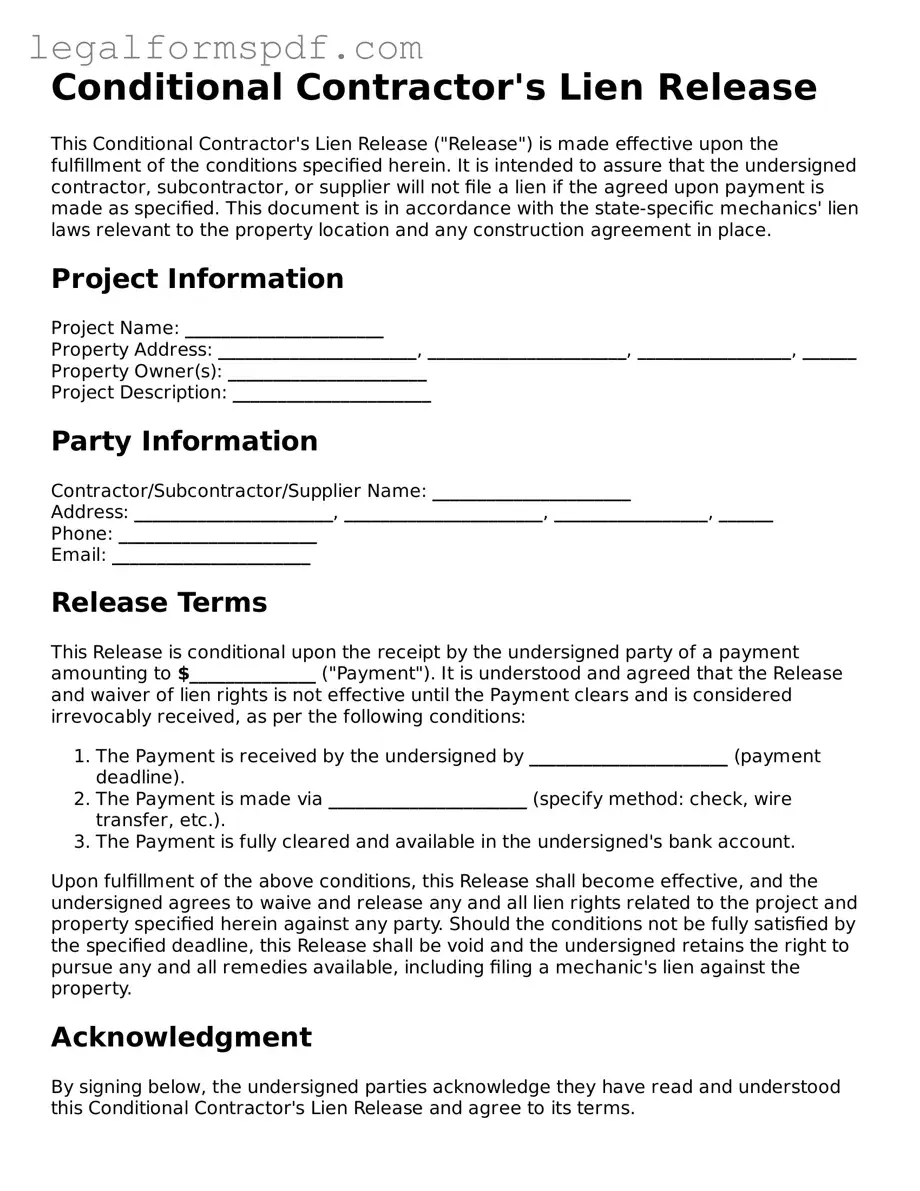Conditional Contractor's Lien Release
This Conditional Contractor's Lien Release ("Release") is made effective upon the fulfillment of the conditions specified herein. It is intended to assure that the undersigned contractor, subcontractor, or supplier will not file a lien if the agreed upon payment is made as specified. This document is in accordance with the state-specific mechanics' lien laws relevant to the property location and any construction agreement in place.
Project Information
Project Name: ______________________
Property Address: ______________________, ______________________, _________________, ______
Property Owner(s): ______________________
Project Description: ______________________
Party Information
Contractor/Subcontractor/Supplier Name: ______________________
Address: ______________________, ______________________, _________________, ______
Phone: ______________________
Email: ______________________
Release Terms
This Release is conditional upon the receipt by the undersigned party of a payment amounting to $______________ ("Payment"). It is understood and agreed that the Release and waiver of lien rights is not effective until the Payment clears and is considered irrevocably received, as per the following conditions:
- The Payment is received by the undersigned by ______________________ (payment deadline).
- The Payment is made via ______________________ (specify method: check, wire transfer, etc.).
- The Payment is fully cleared and available in the undersigned's bank account.
Upon fulfillment of the above conditions, this Release shall become effective, and the undersigned agrees to waive and release any and all lien rights related to the project and property specified herein against any party. Should the conditions not be fully satisfied by the specified deadline, this Release shall be void and the undersigned retains the right to pursue any and all remedies available, including filing a mechanic's lien against the property.
Acknowledgment
By signing below, the undersigned parties acknowledge they have read and understood this Conditional Contractor's Lien Release and agree to its terms.
Contractor/Subcontractor/Supplier Signature: ______________________
Date: ________________
Property Owner Signature: ______________________
Date: ________________
Notarization
(If required by applicable state law, to be completed by a notary public.)
State of _________________
County of _________________
On ____/____/______, before me, ______________________, a Notary Public, personally appeared the above-signed parties, who proved to me on the basis of satisfactory evidence to be the individuals whose names are signed on this document and acknowledged to me that they executed the same in their authorized capacities, and that by their signatures on this document, the individuals, or the entity upon behalf of which the individuals acted, executed the document.
Notary Public: ______________________ (seal)
Commission Expires: ________________
